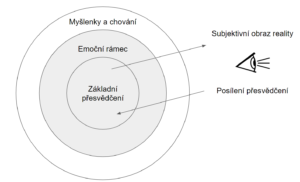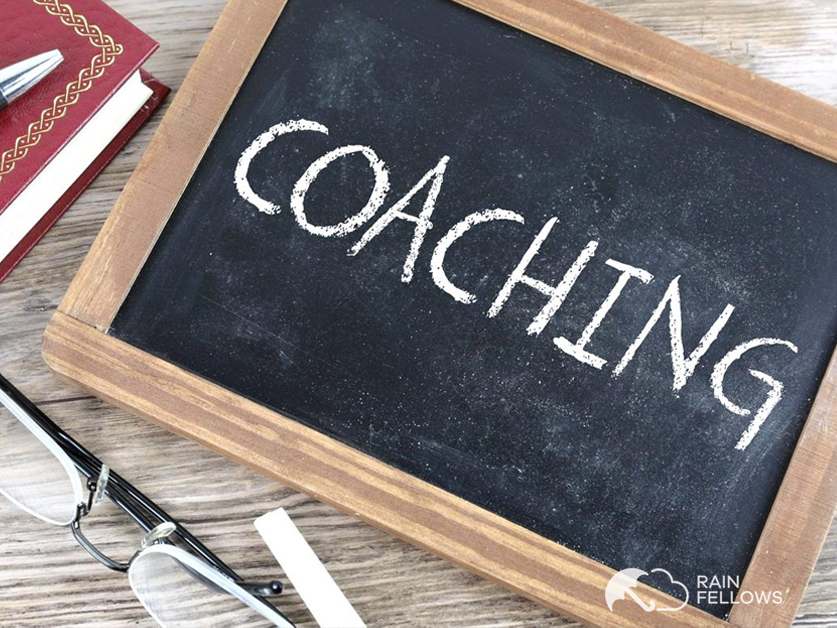The company is made up of people. Leaders, whether formally or informally stipulated, influence the attitude of others in the company through their approach, which in turn means the culture of the company. And this will not affect the processes described on the intranet or the decision of the Board of Directors to go into Agile Transformation. This is only influenced by leaders, be it formal management or informally perceived authority within teams.
The benefits of workshops and working with a team
Trainings, workshops and team coaching (mentoring, scrummastering, however you like) perfectly satisfy the basic need to build competence in key roles. Everyone then understands the principles of Agile, why and what happens, what is expected of them and what they can expect from others, how to solve problems together effectively, and how to deal with responsibility in an Agile environment where there is no single authority determined by hierarchy.
For example, if I want to learn how to play hockey, I need to master the technique of skating, stick work, shooting and finally understand how to create a game. By analogy — as a Product Owner, I need to understand my role, the technique of creating User Stories, how to prioritize the backlog against stakeholder expectations, and how to create a long-term roadmap that does not become a rigid plan.
The role of individual coaching
Individual coaching, on the other hand, allows you to see yourself in a safe space. There, for example, to name the fears arising from negative beliefs that shape my attitude to circumstances and thus affect the rest of the organization. These are made almost immediately after the start of the transformation. From the point of view of the psyche, it is a similar process as, for example, transplanting a flower. With the abolition of the original structures, our artificial tines fall, on which we built our self-confidence.
In our hockey analogy, I can master all the necessary techniques, but if I am in a new club, I do not have enough self-confidence (who has it 100%?) , I will miss the emphasis and certainty in the ending anyway.
Examples of topics I deal with clients during coaching:
- How to prepare for a difficult meeting, where I have to motivate to jointly solve a person who does not recognize me and sabotages everything I try to do?
- As an Agile Coach, how do I motivate a team when I myself am frustrated by what is happening in the company?
- What should I do if I am not in a submissive position towards my supervisor?
- I am new to the position of CEO/Tribe Lead/Agile Coach, how can I trust myself more if I don't have many years of experience yet?
- Do I need to dismiss 20% of the team, when and how to announce it? How to work with those who are about to be laid off, but we need them a while longer for the success of the handover, and how to keep others motivated?
- In general: how to communicate negative messages to the team?
- How and when to communicate with the management or the BOD about a problem and not feel guilty about it? (decrease in self-esteem)
Desire to get quick and simple answers
Most coaching sessions begin with the sentence: “Roman, tell me how do I do it in a given situation? What is the right way to behave in a given situation?” Such demand arises from the fact that in our society we create an illusory image of authority (e.g., parent, teacher) that is supposed to give us the only right answer and we feel safe because of it. There are several reasons for this: 1) the mistaken belief that authorities are the source of truth, 2) it can be a matter of convenience, because I leave immediately with answers and do not have to strain myself too hard to find solutions, 3) but it can also be an unconscious compensation for lack of self-confidence, since I followed the advice of authority, I could not do anything wrong.
I don't want to describe now the essence of coaching, the principle of asking questions, etc. I want to focus on where I see the biggest and fastest shift in clients. Our psyche is a very colorful, non-linear world. Our performance is influenced by emotions that seem beyond our conscious control. Trying to control emotions or learning to suppress emotions comes back like a boomerang. For example, at home, children or a partner can dial us in such a way that a small nuke explodes in our head. But what can be effectively controlled is our beliefs that trigger these emotions. And we then work with those beliefs during coaching.
Beliefs define our world
For example, if I think that the dismissal of an employee is something terrible and that if I say something so terrible to someone, he will get angry and stop liking me (an unconscious fear), then at such a meeting I feel terrible, stutter or deliver a statement to him in the form of a letter and not even shake hands with him. If I believe that the person I'm dismissing will be happier somewhere else because they don't fit into the Agile culture, we'd just worry about each other, emotions change. If I accept myself unconditionally, I will cease to be afraid of rejection and the negative reaction of those around me.
Or: if I am convinced that I have to fulfill the wishes of an authority (historically a parent, currently a superior) or else punishment will come (non-acceptance, exclusion), then I will subconsciously submissive to the superior and perform uncritically whatever he asks me to do. But since my unconscious reacts to the loss of inner strength, I compensate for this by arrogantly judging others (What a jerk that boss is! She's just stupid, you can't do anything about it), low level of motivation to complete the task or subconscious sabotage (e.g., inadvertently forgetting to send handouts/meeting invitations, etc.) If I believe in my own strength and see myself as a partner, I will define myself constructively. Then, when I ask at the next client meeting how it turned out in such a meeting with a supervisor, the answer is often: “Well, it was surprising, but positive! None of my blackest scenarios came true.”

If we focus on any such beliefs during coaching, we typically follow these steps:
- Identifying a situation with emotional potential — usually with a prepared situation, the client comes in or we find it during the initial retrospective.
- Realizing what is the essence of the client/client's emotions in a given situation and what beliefs are behind them.
- Validation of these beliefs -- are they true? Do they help or harm?
- If the client wants to change these beliefs, we use, for example, the Power Sentence technique.
Power sentences
Power sentences are simple statements that reflect a positive belief that is the opposite of the negative belief we have collectively identified. The technique then consists of the client repeating this new belief in the form of a Power sentence to shift attention to it. We cannot simply erase the negative content of our unconscious, but we can shift our attention to a new belief that is consistent with our true nature. For these purposes, I use a set of Power sentences that have deep and general validity. They are archetypes in that sense.
Example: I am who I am, for a reason.
This belief catches the eye of most clients the first time. It's about unconditional acceptance of yourself (I am who I am) and that it has a higher meaning (for a reason). Regardless of whether a person is a believer and sees God's will in it, or if he is an atheist and has respect for the unreal evolution of the universe, we all have a need for the search for a higher meaning (see Carl Gustav Jung's discovery of the psychic).
The client then falls asleep and wakes up with said Power sentence. For example, when the alarm rings, the goal is to stay with your eyes closed for five minutes and let the meaning of the belief resonate within you. Our psyche then redirects attention to this new belief and the world changes before our eyes.
There's nothing left but to try
For me personally, coaching is the fulfillment of a passion that I date back to puberty somewhere. I have often heard that I am such a psychologist. I have always been fascinated by Carl Gustav Jung's work and I use it a lot in my coaching practice. To see the transformation and relief of clients after they remove a long-standing burden from their heads is for me one of the most beautiful feelings I experience in my practice. I have experienced the Power Sentence technique myself and I see a major positive impact on myself. Clients feel that I am accompanying them through a process that I myself went through.
If you are interested in the Power Sentence technique, you can try our The Quest. It doesn't cost anything, it just takes courage to start. I'll be glad if you let me know how it went.

